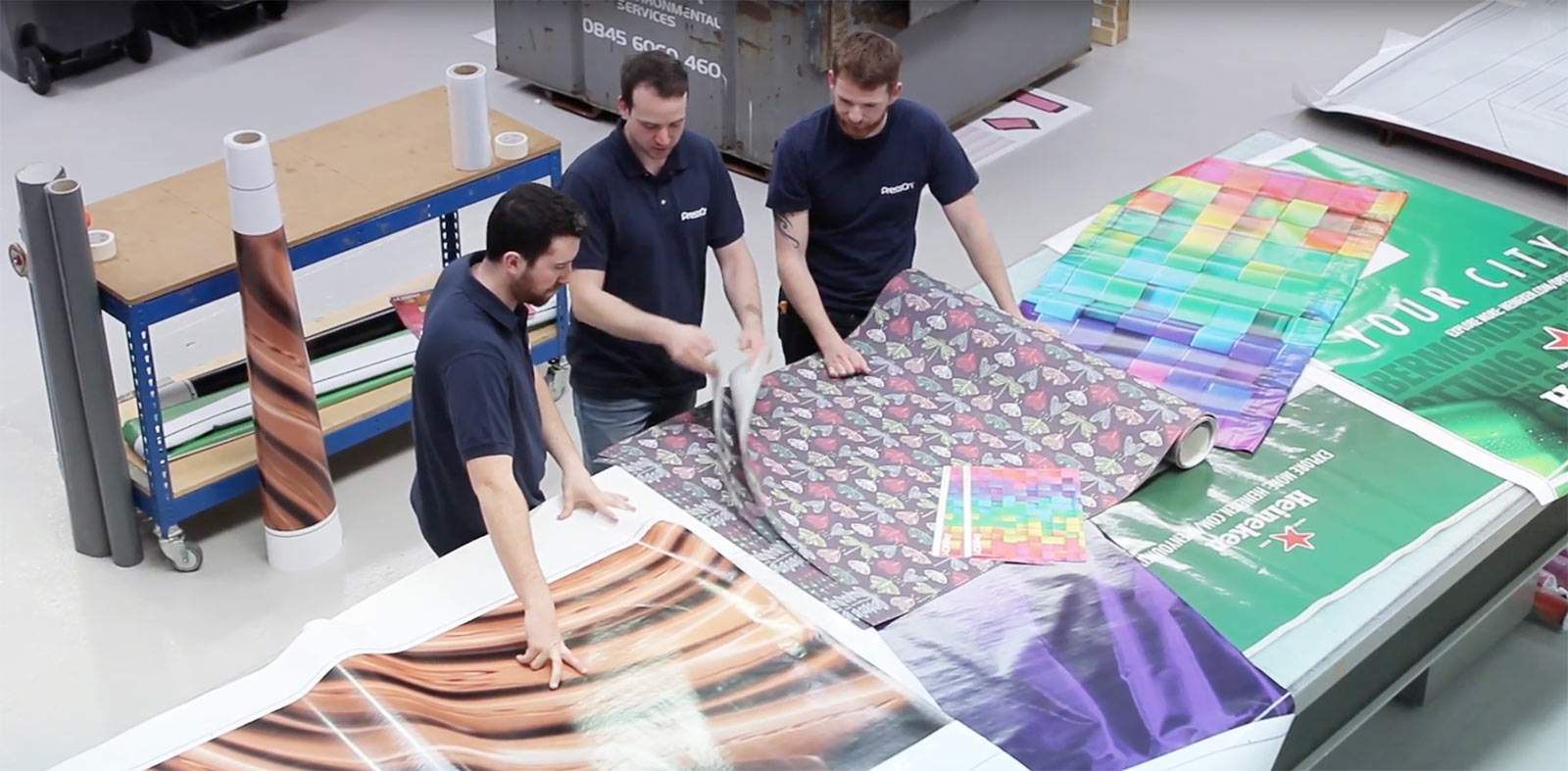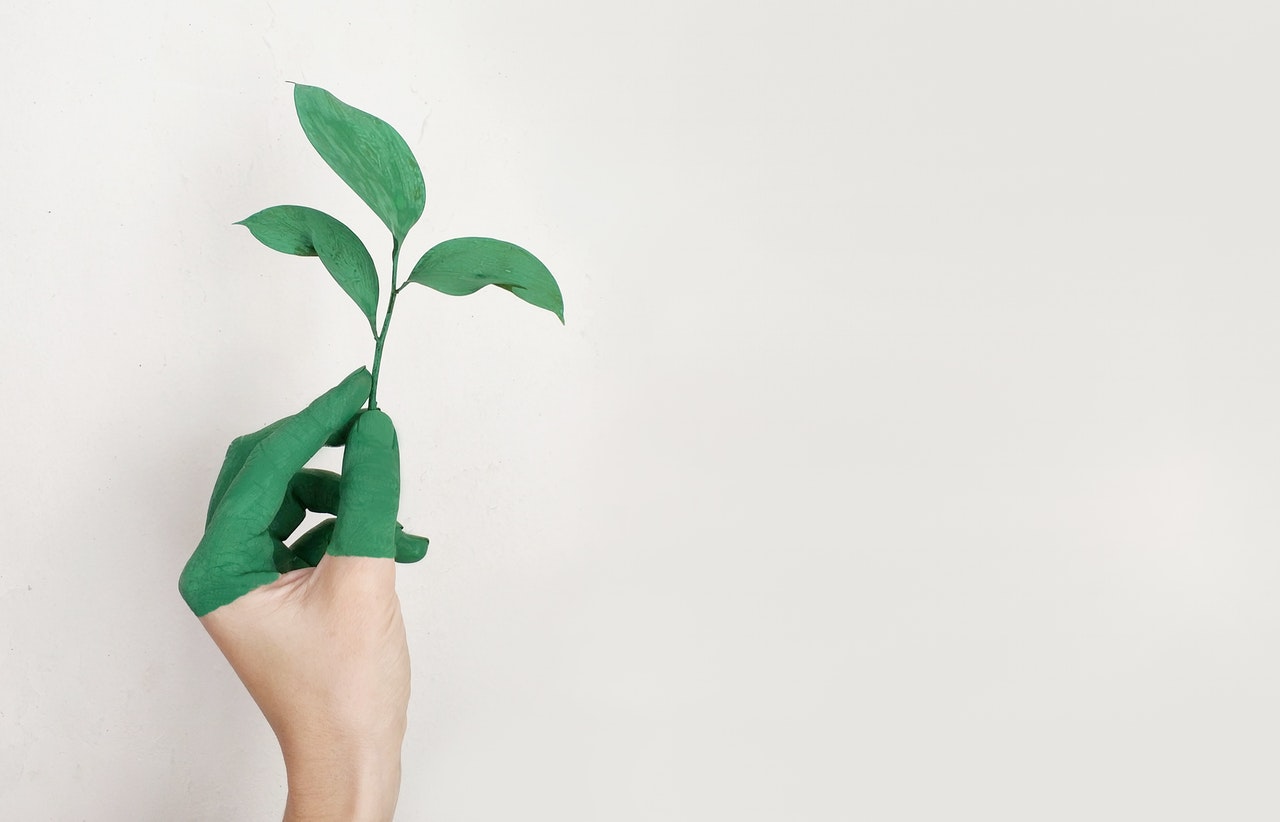Looking for some advice?
Despite the ongoing challenges presented by Covid19, we’re here to help. If you’re working on a large format project, and have any questions, please get in touch via our contact form – our expert project managers are on hand to answer any of your questions.
The history of print goes back a very, very long way, but the large-format industry is still relatively young in the broad scheme of things. Since the introduction of the very first large-format printers in the mid-1980s and early ‘90s, the technology has developed rapidly with a continuous stream of new advances.
From industrial improvements in the printing process, to other benefits for the environment and also the quality of life for the people who operate the equipment, the advancements of the last twenty or thirty years have completely transformed the world of large-format printing. For PressOn (and other print service providers), these developments have completely redefined the calibre of the products and services we can offer our clients in ways we couldn’t have foreseen when we started out.
Improved quality for the customer
We understand that our clients will always want the best results for their projects – and the bigger the customer, the more exacting their expectations for print quality and colour matching. In this regard, the level of quality in the work we can produce today simply wasn’t possible in the early days of the industry.
Everything from the accuracy of the equipment to the inks we can use has changed. When PressOn started nineteen years ago, the large-format machines could only process so-called ‘fugitive inks’ (which would lighten or change colour over a period of time). However, today’s advances allow us to produce material that even years later continues to look as good as it did the day it was printed.
We’ve used a variety of equipment (including HP printers, and cutting edge colour-management software such as GMG) for a long time, and we’ve made a lot of updates to our machinery and tools. Thanks to these breakthroughs in technology, print suppliers can now offer impeccable colour consistency and much faster turnaround times to their customers.
We know that the print industry needs to embrace these kinds of high speed turnarounds if it’s to continue to be relevant; marketing is a fast-moving industry, and the arrival of digital channels now means ads can be designed, approved, and installed in the same day – putting additional pressure on printing companies to meet tighter and tighter deadlines. Fortunately, thanks to the power of cutting-edge print equipment, we are able to deliver results within days or even hours, that would have once taken weeks.
Automated overnight printing, too, has been a blessing that has allowed us to do more with our time, and dramatically increase our output, improving efficiency and allowing us to deliver results with the speed our clients expect.
The health of the planet
We live in an increasingly eco-conscious world. FESPA reported last year that over three-quarters (76%) of printing companies around the world said that their customers were concerned about environmental issues to the degree that it had become a factor in their business strategy (with more than one in five describing it as a “major influence”).
This shift in opinion applies to the consumer too. Today for example, many people are refusing to use plastic straws for fear of polluting the oceans, and anything disposable that isn’t obviously recyclable or biodegradable is treated with suspicion. Many of our clients, too, are becoming more sensitive to environmental issues, and want to be able to demonstrate their ‘green’ efforts to their own customers.
When it comes to print eco-innovations for large format printing brands, innovations from suppliers (such as HP’s recycling scheme) have set the bar high when it comes to effort, and it’s reassuring to see the biggest and most significant brands in the industry setting such a positive example.
Other industry advances have tackled different areas of ecological concern; recent years have seen the development of environmentally-friendly inks, recycled substrates, and new products such as tension fabric frames (with designs printed on fabric and stretched over reusable aluminium frames – producing an elegant large print effect using no paper and a minimum of plastic).
Very recently, we’ve also been able to start offering 3D tension fabric box frames – striking three-dimensional variants of the tension fabric systems. Eco-friendly products don’t just have to mean substitutions or rehashed versions of existing commodities – they can be new and original offerings in their own right.
Environmental concerns aren’t going away any time soon, and it’s vitally important that we – as an industry – continue to develop and embrace new eco-innovations in years to come.
The daily life of the print professional
The benefits of the technological advancements in print are apparent for the customer and the planet, but it’s no less true that modern developments have also improved life for the people who work with the equipment every day.
The capacity of today’s large-format print machinery to run itself overnight, sending status reports and receiving commands remotely from a user’s smartphone, has had an incredible effect on our team’s work-life balance. Whilst we’ve never been afraid to work through the night if that’s what it takes to deliver a particular project, the fact that we can continue a print run through the night eliminates the need for 2am roll-changes, and means we can effectively produce on a 24/7 basis.
Almost everything about the routine operation of these large-format machines has changed over time. Tool-free setup and quicker roll changes allow us to turn projects over quickly with a minimum of downtime, which, combined with the steadily increasing speed of printing, means that projects that would once have taken days can now be completed in hours. Newer printers, such as the HP Latex 3600 support heavier roll weights than their predecessors, too, allowing them to run for longer before needing to be replaced.
All of these optimisations together make the life of a busy print professional immeasurably easier and more manageable than even a few short years ago, and our investments in new technology have as much of a benefit for us and our team as they do for our clients.
___
When we started PressOn all the way back in 2000, we couldn’t have foreseen the quality of the equipment we would have at our disposal today. Our day-to-day work has been completely transformed by the progression of large-format technology, and we have nothing but optimism and excitement for the future.
Who knows what the technology of print will look like another twenty years from now? We think the industry will have even more to offer in tomorrow’s world – and we will continue to invest in new advances to ensure that everybody can reap the benefits to come.


